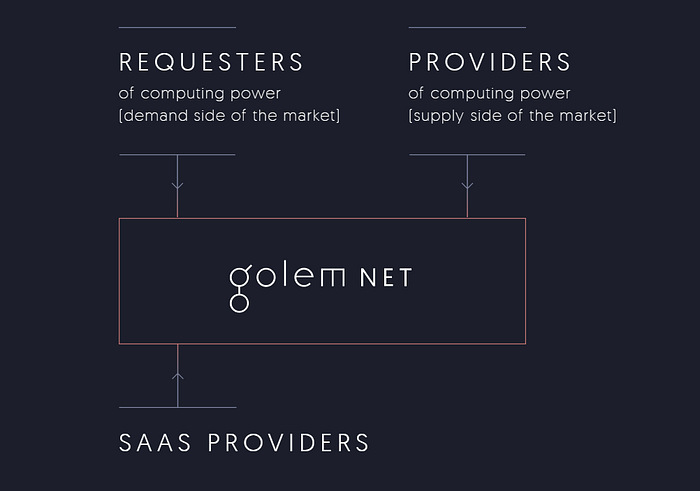Golem Economics 101
Give the matter some sincere thought, and you will realize that there are some serious problems with the way the market for computing power is organized. Nowadays, anyone seeking additional resources is forced to rent them from cloud platforms or specialized rendering farms. These solutions are, without doubt, reliable. However, they are also highly overpriced, as in recent years the market for computing power has evolved into an oligopoly where giants such as Amazon or Microsoft leverage their market power to enjoy hefty margins.
A new market setup
Yet this market is not doomed to function like this forever. Imagine a different setup, with thousands or even millions of individual providers supplying computing resources in a perfectly competitive environment. Who would take up the role of these providers? Well, virtually every one of us. Since we generally use only a fraction of our computers’ capacity, we all have some resources that can be rented out. What we actually need is a flexible and scalable solution which would aggregate idle resources and make them available to those seeking computing power, eventually creating the first truly decentralized global supercomputer which will quickly rise up to gravely challenge Amazon Web Services or Microsoft Azure. With Golem approaching, it is high time that these guys started worrying seriously.
So, how is Golem going to make it all possible?
Supply side
First, we need to guarantee supply of computing power to the network. This requires attracting a sufficient number of individual suppliers (whom we call ‘providers’), because Golem will be an entirely p2p solution and will not be reliant on any centralized servers. Why should anyone be interested in offering underutilized resources of their machines? We are convinced that an option to earn a few bucks a month (in ETH terms) by simply running the Golem App in the background will bring a lot of users on board. The application will be easy to use and 100% secure for any data stored on providers’ machines. What is more, it will be up to providers to decide what fraction of their computing power they wish to rent out. With the Golem App running, anyone should be able to launch a web browser or a word processor without even noticing that their PC is earning them real money.
Demand side
In order to get individual providers rewarded for contributing their resources, we need to attract users seeking additional computing power (we call them ‘requestors’). In their case, the incentive to join the network is also financial, because Golem will simply be cheaper than any existing cloud computing platform or rendering farm. The key concept behind Golem is to make the best use of existing resources without splashing out on any additional investments. The marginal cost of mobilizing idle computing power of providers’ PCs boils down to a slightly higher electricity bill. Golem will not only be cheaper, but will also offer requestors user experience which is either comparable or even superior to the experience to which they are currently accustomed. After setting the maximal fee for computing a particular task, they can be certain the Golem App will do the job for them, i.e. securely distribute all necessary resources to computing nodes, aggregate and verify the results and automatically clear the transaction. Since most requestors will be seeking additional resources only from time to time, in the meantime they will have the possibility of renting their machines out by default and collecting some ETH which can later be spent on commissioning computing tasks to the network.
Even though the initial setup of Golem is aimed at individual requestors and providers, it will also serve as a useful solution for datacenters and other wholesale hardware operators: they simply can choose to join the Golem Network and offer their resources in the prosumer model described above.
Software creators
Creators and distributors of software will be another crucial element of the Golem ecosystem. Although our initial use cases are based on open source solutions and are being implemented by Golem Team, future releases will include a task API and task definition framework, which will allow anyone to create applications running on the Golem Network. Creators of such daaps will be able to pick the distribution model of their choice, but thanks to the ‘Golem Shop’ (akin to Google Play or App Store) it will be easy to monetize any application in an SaaS model, as fees for using applications in Golem will be collected in the same manner as fees for using the infrastructure. We are also convinced that the computing platform created by Golem will be a very attractive distribution channel for providers of traditional proprietary software. Everyone will benefit from integrating Golem into virtually any application that needs a lot of computing power, such as commercial rendering engines or statistical packages for big data analytics.

